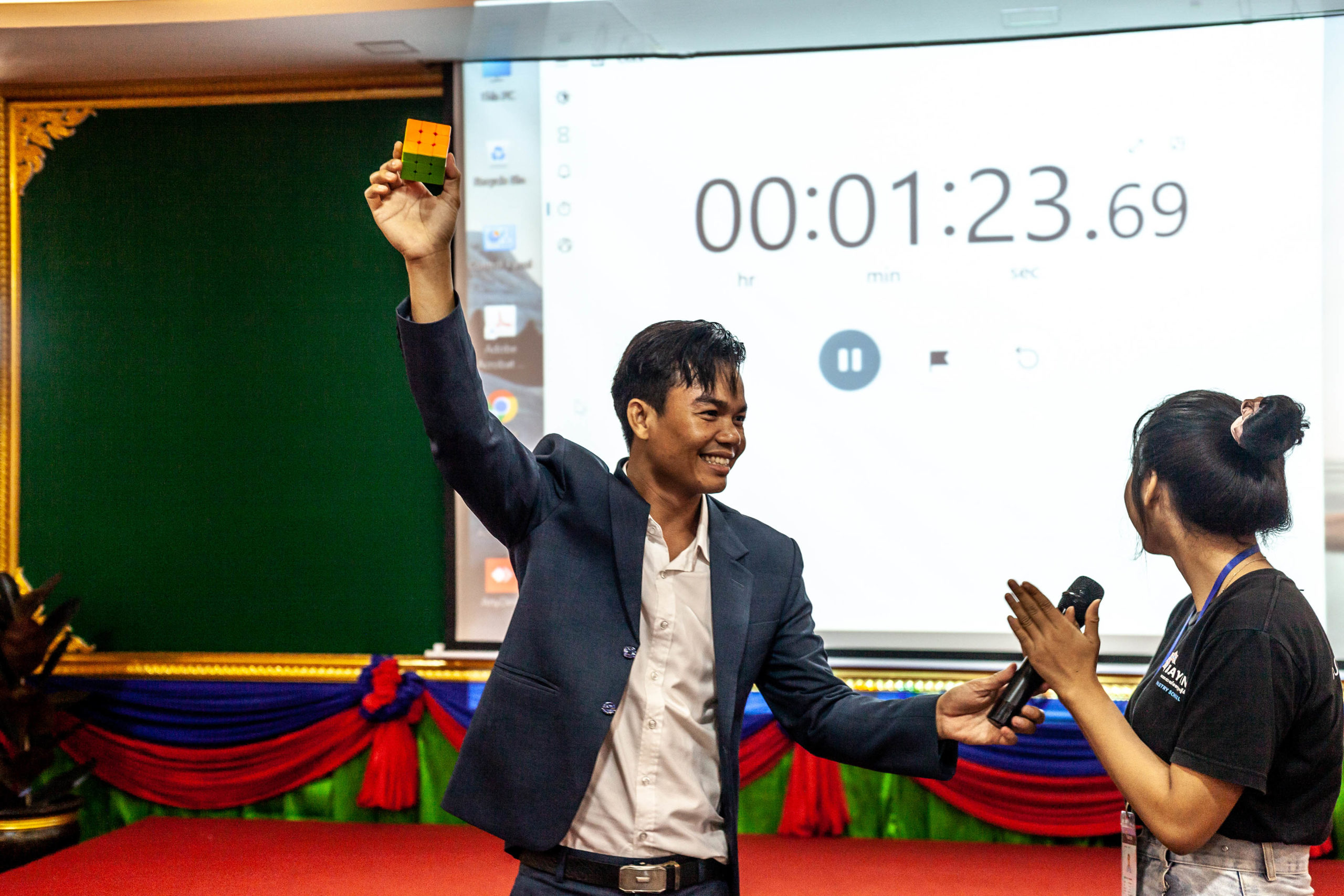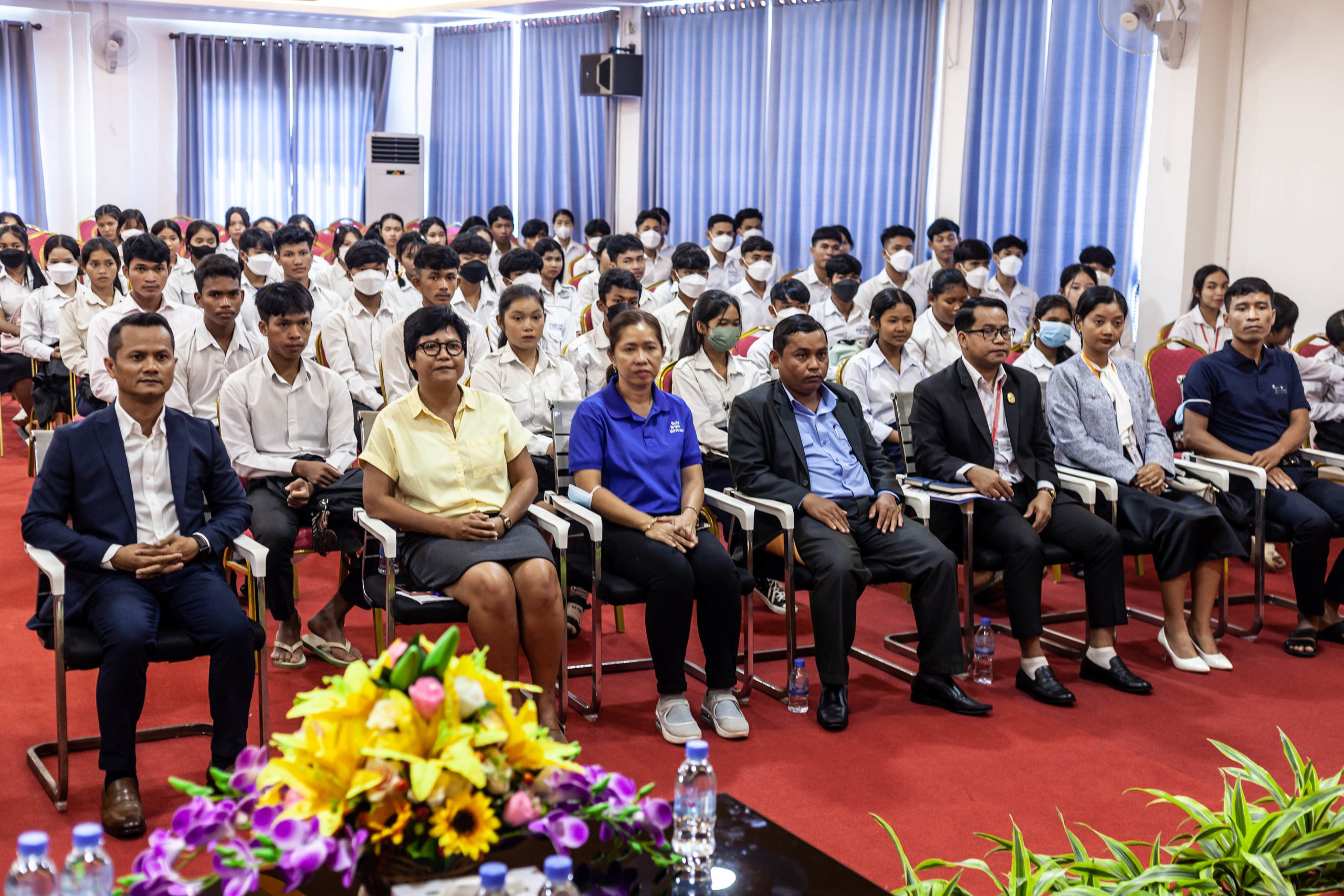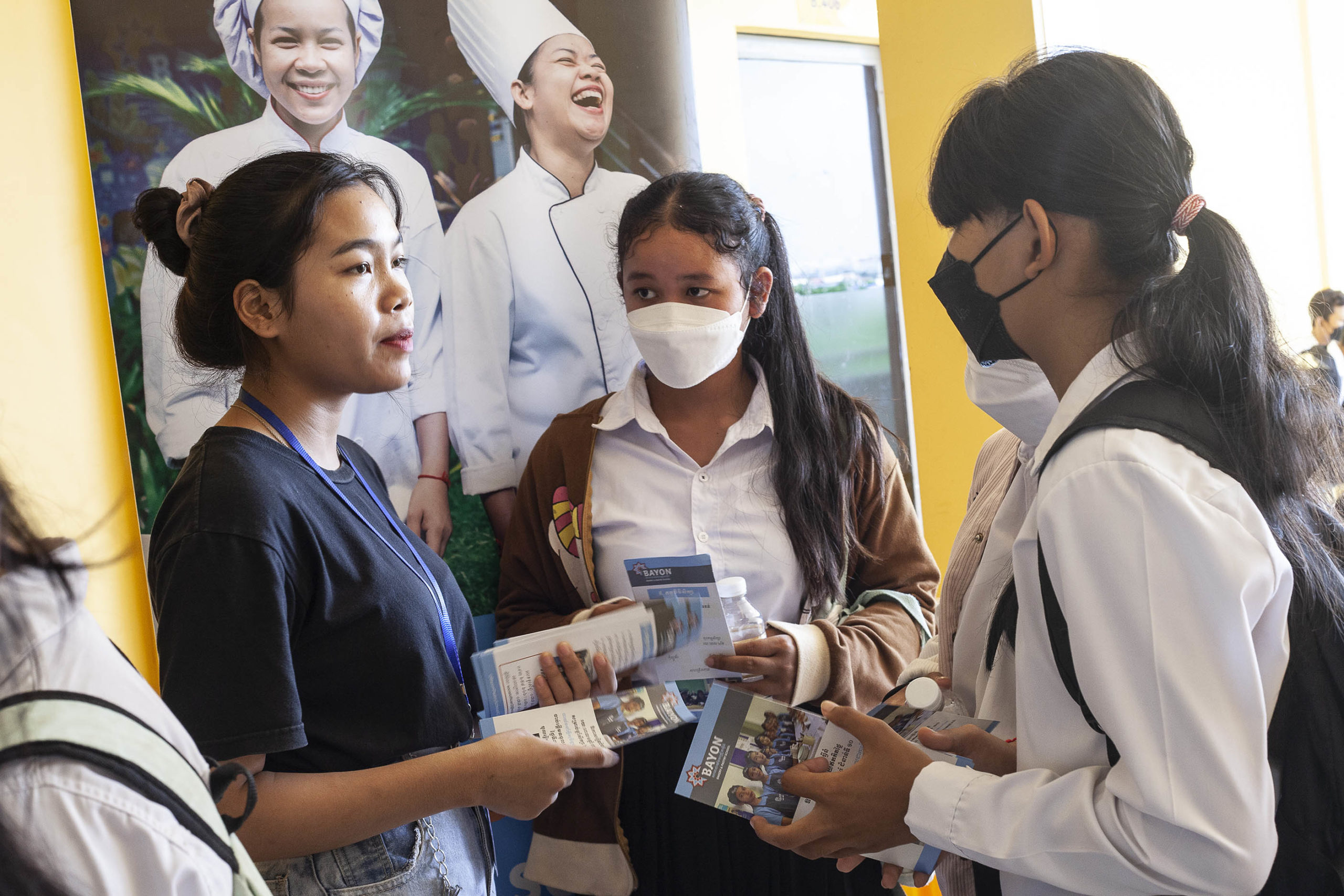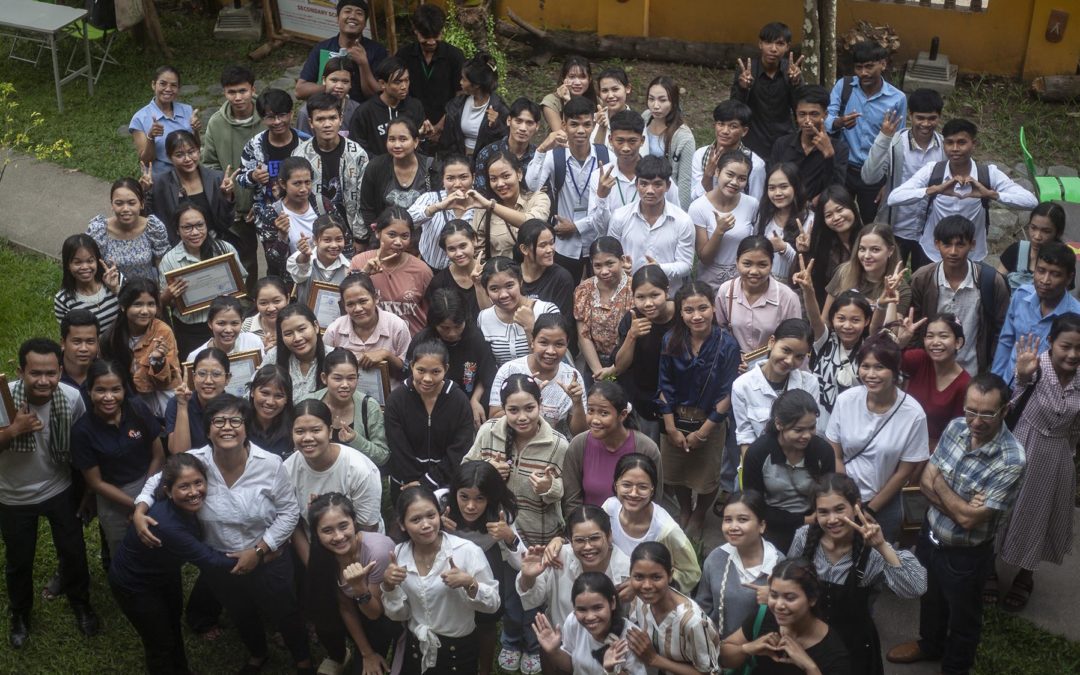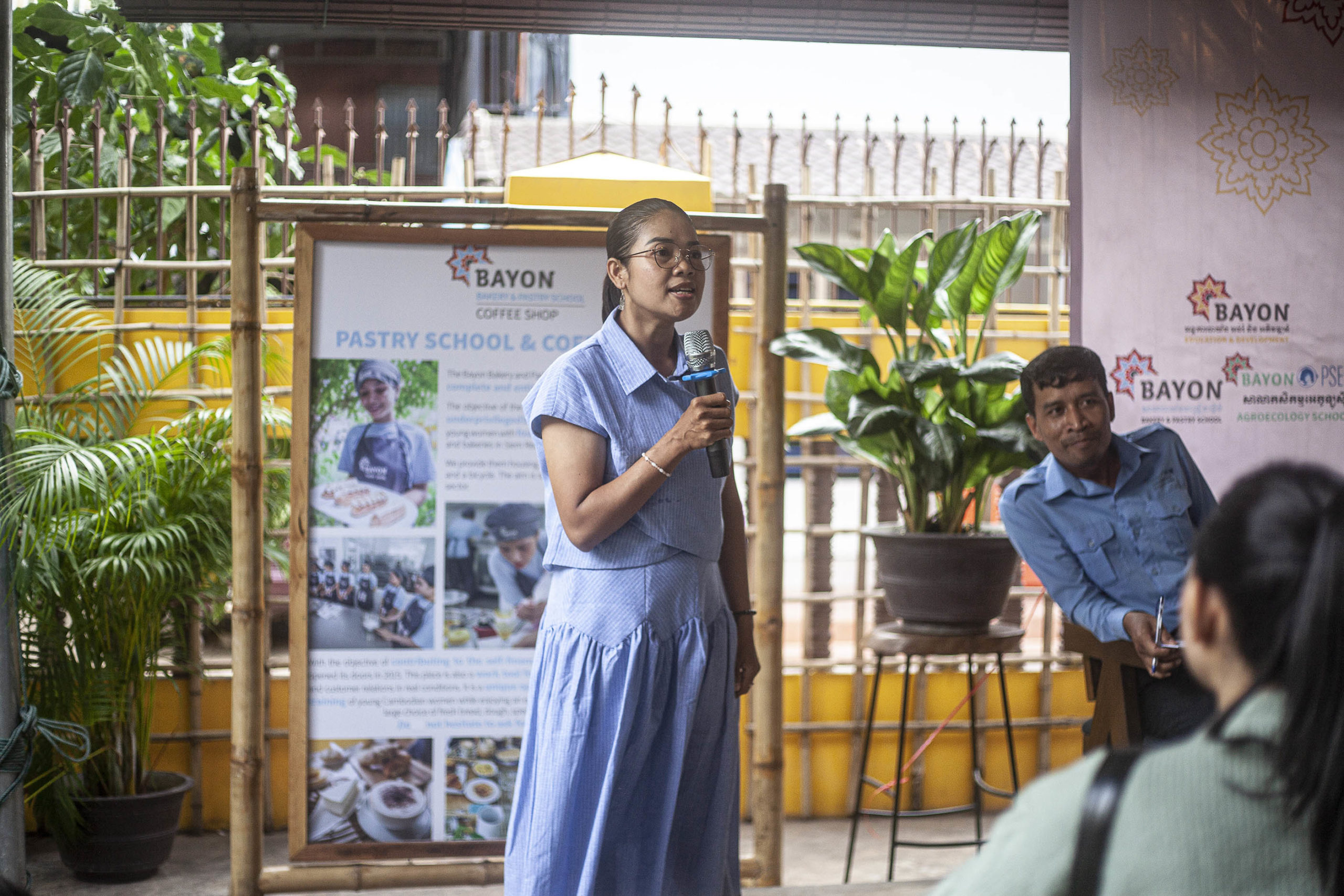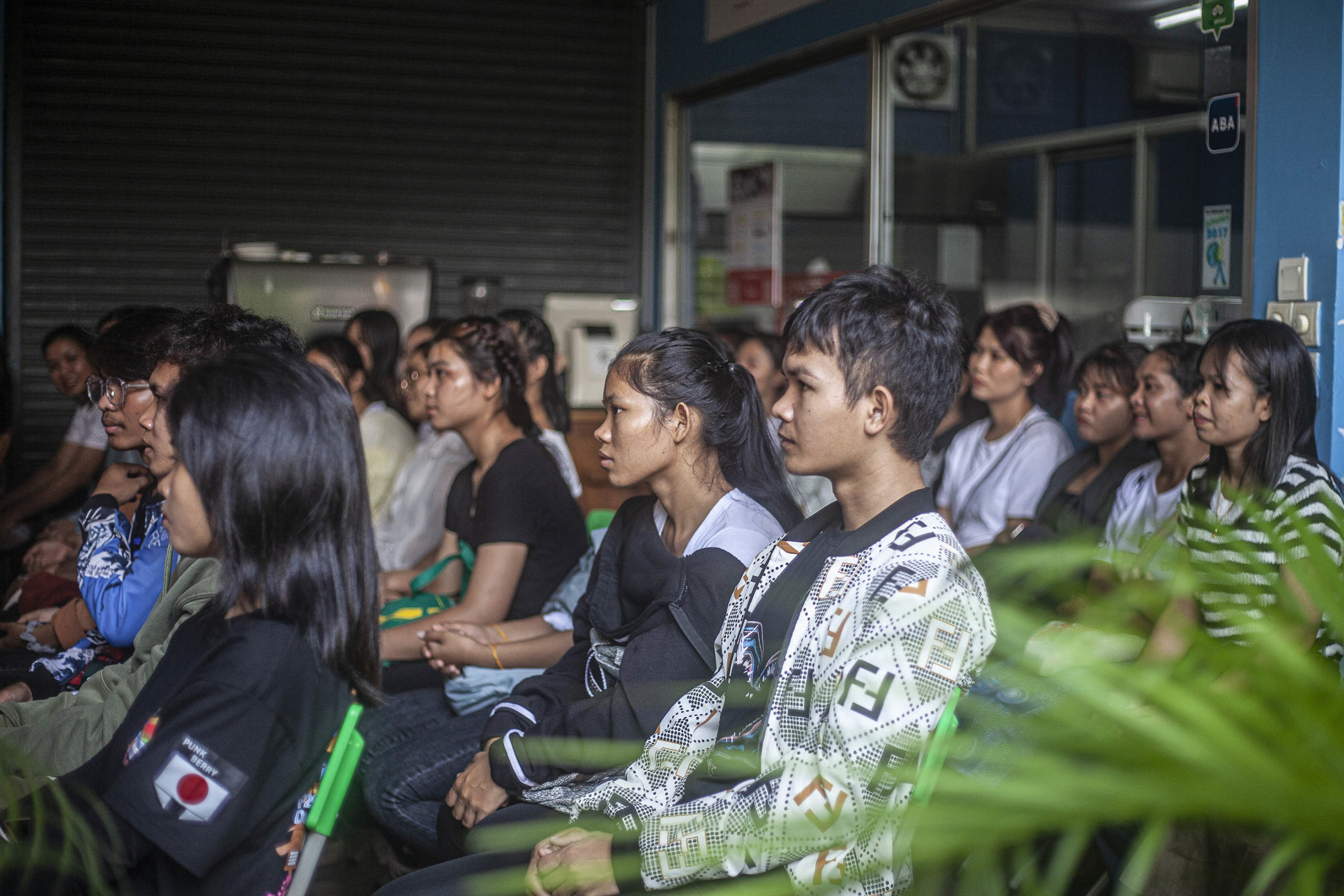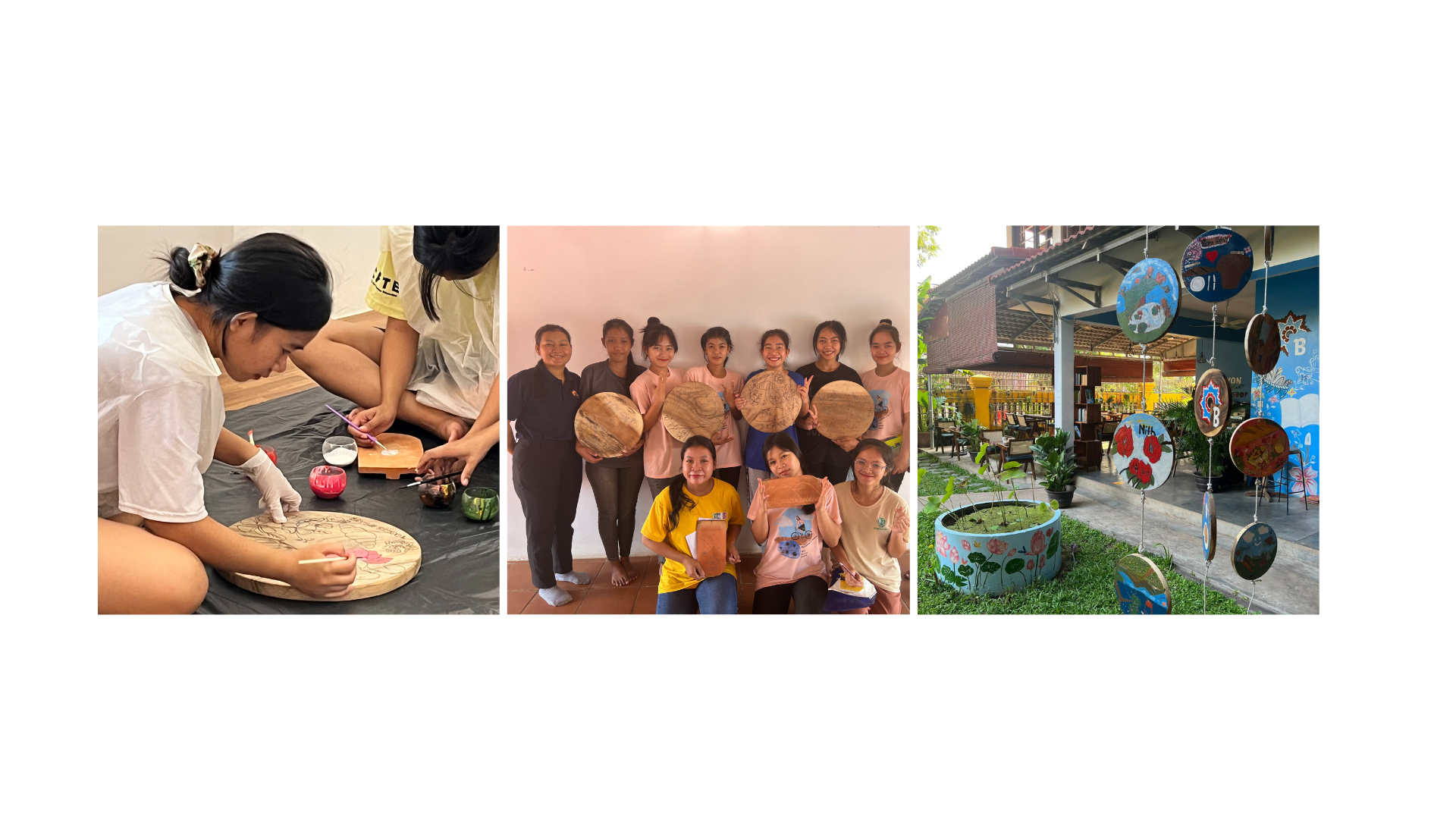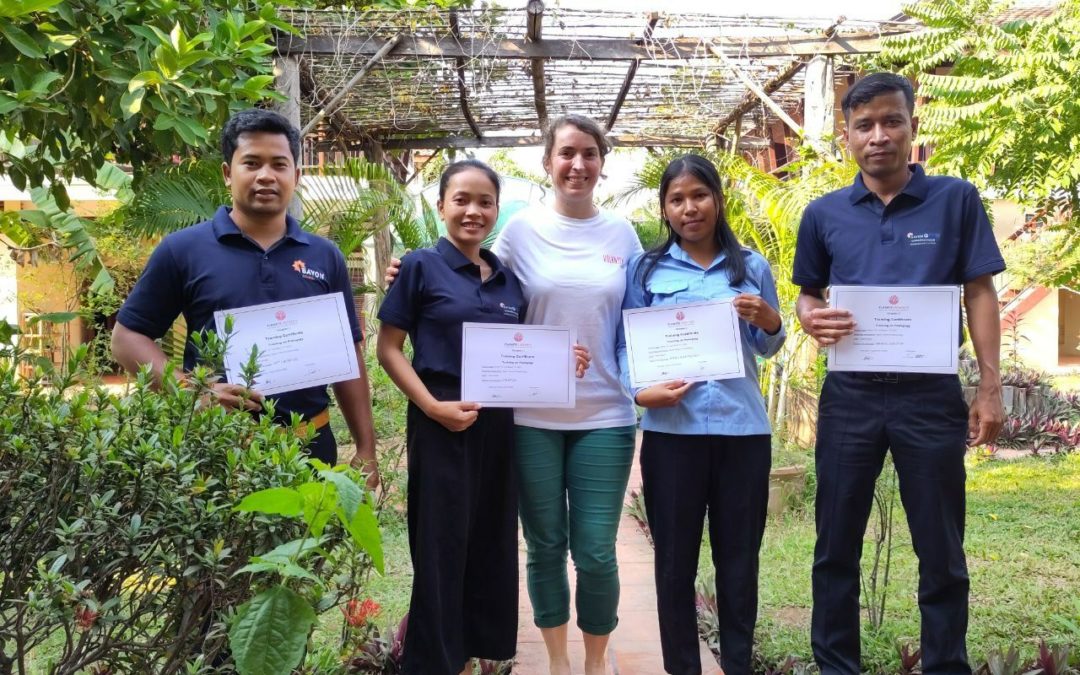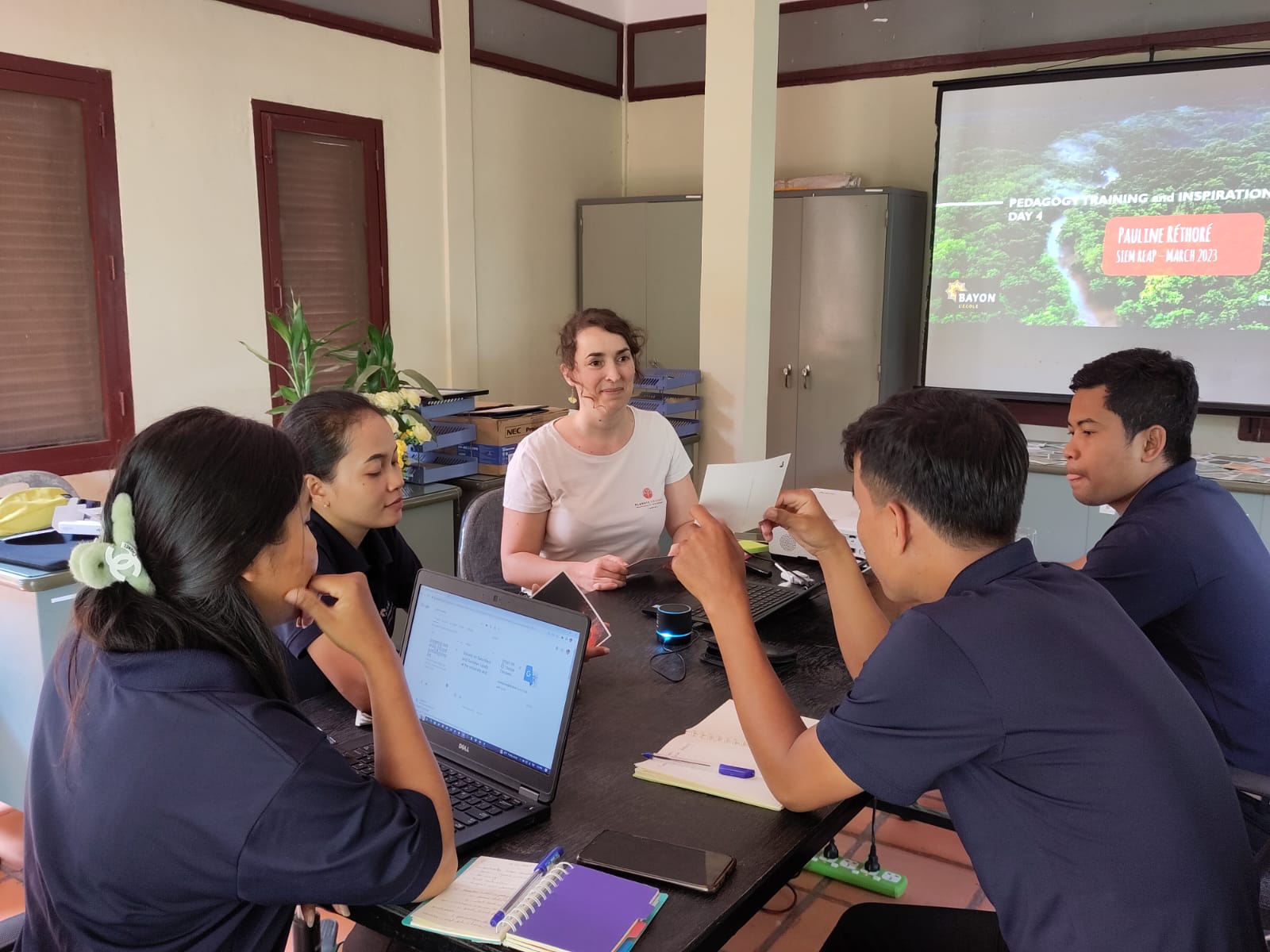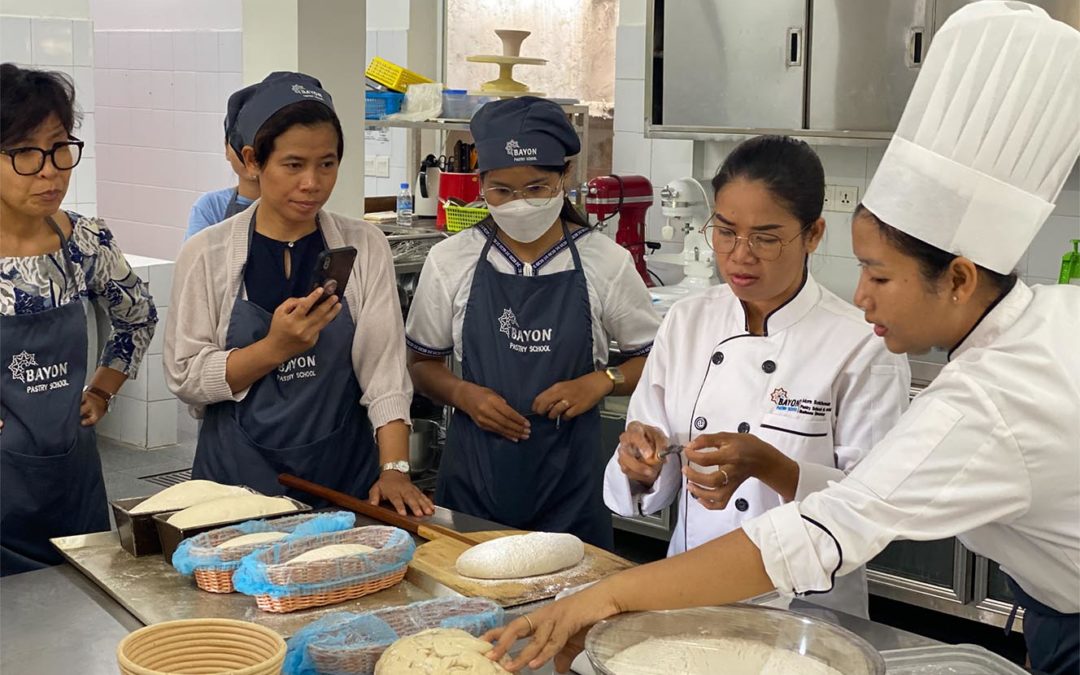
First edition of the Bayon Pastry Short Courses: A success to enjoy!
Dear Friends and Food Lovers,
It is with great joy that we share with you the delectable and memorable moments of the first edition of the Bayon Pastry Courses.
Throughout the month of June, our school opened its doors wide to welcome eight passionate participants. At the heart of this culinary adventure, succulent fruit pies, exquisite toppings, creamy pastry creams, as well as divinely delicious cookies and cakes, were the stars of six gourmet Saturdays.
Expertly guided by Sokhoeurn, our dedicated pastry school director, and Sreynoeng, our energetic junior instructor, each participant was immersed in the fascinating world of pastry. Our professional laboratory has been transformed into a space of discovery and creativity where each gesture, each mixture and each taste are harmoniously blended.

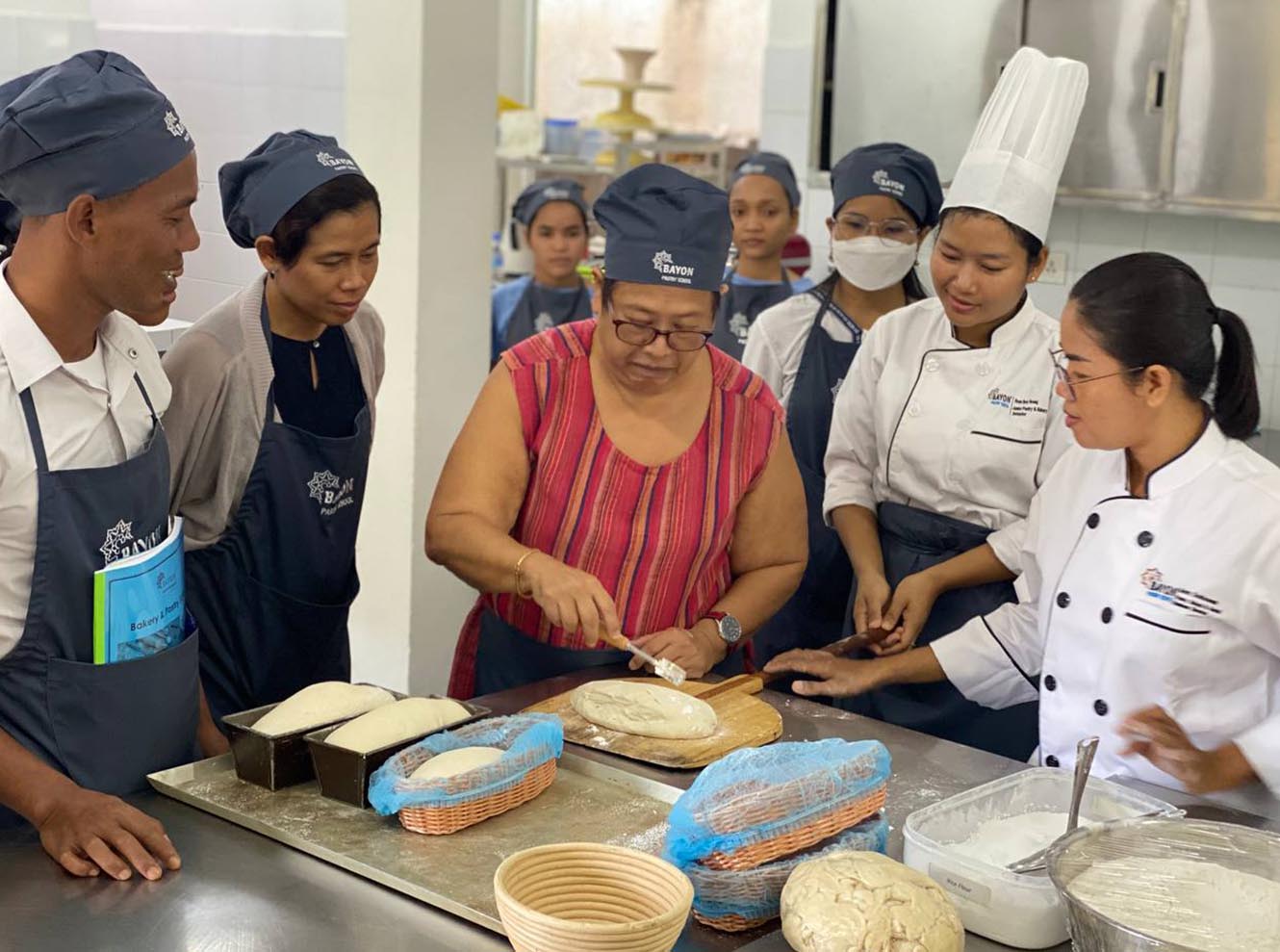

However, the success of these courses does not stop at the acquisition of culinary skills. Each registration contributes significantly to the support of training for our students within the pastry school. Thus, each delicacy savored in class becomes a concrete step towards the autonomy and education of our future pastry chefs.
The warm and enthusiastic feedback from our participants is living proof of the impact of this experience. Sopheak, one of the participants, shares her feelings.
The courses opened the doors to an exciting universe for me. Not only did I learn pastry techniques, but I also found a community of enthusiasts. Knowing that our commitment directly supports the students of the pastry school is a source of pride.
The courses opened the doors to an exciting universe for me. Not only did I learn pastry techniques, but I also found a community of enthusiasts. Knowing that our commitment directly supports the students of the pastry school is a source of pride.
The first edition of the Bayon Pastry Courses created a momentum that continues to grow. We express our deepest gratitude to everyone who has contributed to this success, as your support goes beyond the classroom and directly touches the lives and education of our future pastry chefs.
In conclusion, we would like to warmly thank all the participants and pastry lovers who made this first edition unforgettable. We invite you to join our mission, to share the passion for pastry and to invest in the education of future generations.
With infinite gratitude and greedy anticipation of what is to come,
The Bayon Pastry Course team


